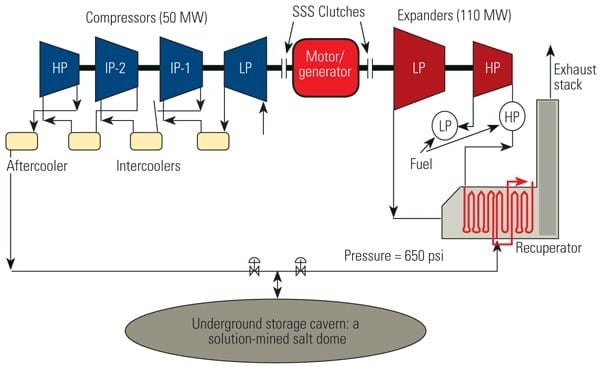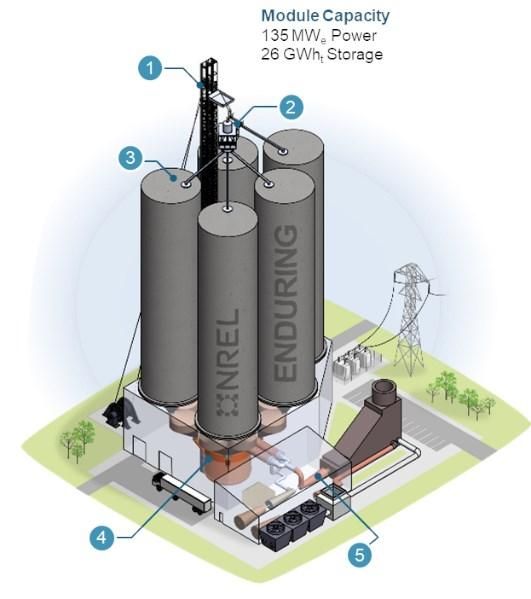Neptune missiles struck Russian energy infrastructure, oil refineries, Ukraine confirms – The Kyiv Independent

Report on Military Strikes Against Energy Infrastructure and Implications for Sustainable Development Goals
1.0 Incident Overview
On October 31, the Ukrainian Navy confirmed the execution of missile strikes against critical energy infrastructure within the Russian Federation. The operation utilized domestically produced Neptune cruise missiles. This action represents a significant escalation in the targeting of infrastructure, directly impacting several United Nations Sustainable Development Goals (SDGs), particularly those related to energy, infrastructure, and peace.
2.0 Targeted Facilities and Impact on SDG 7 and SDG 9
The strikes targeted key components of the regional energy grid, undermining SDG 7 (Affordable and Clean Energy) and SDG 9 (Industry, Innovation, and Infrastructure). The destruction of resilient infrastructure is a direct setback to the progress of these goals. The primary facilities affected include:
- Oryol Thermal Power Plant (TPP): A facility with an electrical capacity of at least 330-megawatts, owned by a division of the state energy company Rosatom.
- Novobryansk Electrical Substation: A critical node in the Oryol Oblast power distribution network.
- “Vladimir” Electrical Substation: A major regional energy hub with a capacity of approximately 4,010 MVA.
- Novo-Yaroslavsky Oil Refinery (vicinity): Reports indicated explosions near Russia’s fifth-largest refinery, which has an annual processing capacity of 15 million tons of crude oil.
The Ukrainian Navy stated the objective was to disrupt the power supply to military-industrial complexes, thereby impacting the logistics of opposing forces.
3.0 Contradictory Reports and Verification
Official accounts of the incidents vary, highlighting challenges in obtaining verified information during active conflict.
- Ukrainian Navy Confirmation: Acknowledged the use of Neptune missiles to strike the Oryol TPP and Novobryansk substation.
- Russian Official Statements: The Governor of Oryol Oblast attributed damage to debris from intercepted drones, claiming power was almost completely restored. The Governor of Vladimir Oblast confirmed a strike on an unspecified infrastructure facility.
- Independent Media and Resident Reports: Russian opposition news channels and local residents reported multiple explosions, large blasts, and subsequent blackouts, with some accounts suggesting the sounds were inconsistent with drone attacks.
4.0 Context and Implications for SDG 11 and SDG 16
These strikes occurred subsequent to a large-scale Russian attack on Ukraine’s energy infrastructure on October 30, which included strikes on multiple thermal power plants and resulted in civilian casualties at the Sloviansk TPP. This cycle of retaliatory attacks on essential infrastructure directly contravenes the principles of SDG 16 (Peace, Justice and Strong Institutions) by perpetuating conflict and targeting systems vital for civilian life.
The disruption of power supplies has severe consequences for urban populations, threatening SDG 11 (Sustainable Cities and Communities). The impacts include:
- Disruption of essential services (e.g., healthcare, water supply).
- Economic paralysis for non-military industries.
- Increased vulnerability and hardship for civilian populations.
The targeting of dual-use infrastructure complicates efforts to protect civilians and achieve sustainable peace, demonstrating how armed conflict fundamentally undermines the global development agenda.
Analysis of Sustainable Development Goals in the Article
1. Which SDGs are addressed or connected to the issues highlighted in the article?
-
SDG 7: Affordable and Clean Energy
The article extensively discusses attacks on energy infrastructure, which directly relates to the goal of ensuring access to affordable, reliable, sustainable, and modern energy for all. The destruction of thermal power plants and electrical substations, such as the “Oryol Thermal Power Plant (TPP)” and the “Novobryansk electrical substation,” directly undermines the reliability and availability of energy.
-
SDG 9: Industry, Innovation, and Infrastructure
This goal focuses on building resilient infrastructure. The article highlights the deliberate targeting and destruction of critical infrastructure. Facilities like the “Oryol TPP,” the “‘Vladimir’ substation,” and the “Novo-Yaroslavsky oil refinery” are key components of regional and national infrastructure, and their damage represents a direct setback to this goal.
-
SDG 11: Sustainable Cities and Communities
The attacks on energy infrastructure have immediate consequences for cities and communities, leading to “blackouts over the city” of Oryol. This compromises the safety and functioning of urban areas, making them less resilient and sustainable. The disruption of power affects all aspects of urban life, from basic services to economic activity.
-
SDG 16: Peace, Justice, and Strong Institutions
The core of the article is about a military conflict, which is in direct opposition to the goal of promoting peaceful and inclusive societies. The attacks described are acts of violence. The article mentions casualties from a related attack, stating it was responsible for “killing two people and injuring others,” which is a direct contravention of the aim to reduce violence and related death rates.
2. What specific targets under those SDGs can be identified based on the article’s content?
-
Target 7.1: Ensure universal access to affordable, reliable and modern energy services
The attacks on power plants and substations are explicitly intended to disrupt the power supply. The article notes that the destruction of these facilities “dealt a serious blow to the occupiers’ logistics” and resulted in “blackouts over the city.” This directly works against ensuring reliable energy access for the affected populations.
-
Target 9.1: Develop quality, reliable, sustainable and resilient infrastructure… to support economic development and human well-being
The article details the damage to critical energy infrastructure. The strikes on the “Oryol TPP,” the “‘Vladimir’ substation,” and the “Novo-Yaroslavsky oil refinery” are direct attacks on the reliability and resilience of infrastructure essential for both economic activity and the well-being of the population.
-
Target 11.5: Significantly reduce the number of deaths and the number of people affected and substantially decrease the direct economic losses… caused by disasters
While the context is a man-made conflict rather than a natural disaster, the impact aligns with this target. The article mentions that an attack on the “Sloviansk Thermal Power Plant in Donetsk Oblast, killing two people and injuring others.” This highlights the direct human cost and impact on populations resulting from the destruction of infrastructure in populated areas.
-
Target 16.1: Significantly reduce all forms of violence and related death rates everywhere
The entire article describes acts of military violence. The confirmation of a missile strike on energy facilities and the report of a retaliatory attack that resulted in casualties (“killing two people and injuring others”) are direct examples of the violence and death rates this target aims to reduce.
3. Are there any indicators mentioned or implied in the article that can be used to measure progress towards the identified targets?
-
Indicators for SDG 7 & 9:
The article provides specific quantitative and qualitative data that can serve as indicators of infrastructure damage and energy disruption. These include:
- The number of energy facilities attacked (e.g., Oryol TPP, Novobryansk substation, Vladimir substation, Novo-Yaroslavsky oil refinery).
- The electrical capacity of the affected facilities, such as the “Oryol TPP has an electrical capacity of at least 330-megawatts (MW)” and the “‘Vladimir’ substation has a capacity of approximately 4.010 MVA.” This measures the scale of the disruption to energy generation and distribution.
- The occurrence of power outages, as noted by the report of “blackouts over the city” of Oryol.
-
Indicators for SDG 11 & 16:
The article provides direct indicators related to the human cost of the conflict, which can be used to measure the negative progress against these goals. These include:
- The number of conflict-related casualties. The article explicitly states that a Russian attack on the Sloviansk Thermal Power Plant was responsible for “killing two people and injuring others.” This serves as a direct measure for Target 16.1 (conflict-related death rates) and Target 11.5 (number of people killed or affected by disasters/conflict).
4. Summary of Findings
| SDGs | Targets | Indicators |
|---|---|---|
| SDG 7: Affordable and Clean Energy | 7.1: Ensure universal access to affordable, reliable and modern energy services. |
|
| SDG 9: Industry, Innovation, and Infrastructure | 9.1: Develop quality, reliable, sustainable and resilient infrastructure. |
|
| SDG 11: Sustainable Cities and Communities | 11.5: Significantly reduce the number of deaths and the number of people affected… caused by disasters. |
|
| SDG 16: Peace, Justice, and Strong Institutions | 16.1: Significantly reduce all forms of violence and related death rates everywhere. |
|
Source: kyivindependent.com
What is Your Reaction?
 Like
0
Like
0
 Dislike
0
Dislike
0
 Love
0
Love
0
 Funny
0
Funny
0
 Angry
0
Angry
0
 Sad
0
Sad
0
 Wow
0
Wow
0




















































.jpg.webp?itok=0ZsAnae9#)



























